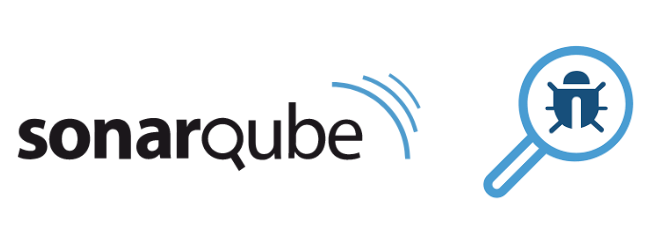SonarQube is an open-source platform designed to continuously inspect code quality while easily integrating into the existing development workflow. It provides comprehensive code analysis and reporting, aiding developers and teams in maintaining code health, identifying bugs, vulnerabilities, and enhancing overall software quality. The solution performs checks at every stage of the development process.
Now you may ask why can't I just use an IDE Linter? The thing is Linters tend to use open source and oftentimes outdated plugins that just nearly aren't as good as what Sonar has to offer. Linters don't generally look at the big picture and instead look at the immediate/nearby lines of code whereas SonarQube provides a comprehensive analysis of code quality, security vulnerabilities, and bugs across an entire project where things can arise through multiple files and coupling.
- Code Quality Analysis: Offers in-depth insights into code quality metrics, ensuring better maintainability and readability.
- Language Support: Provides support for various programming languages such as Java, JavaScript, Python, C#, and more.
- Security Vulnerability Detection: Detects security vulnerabilities, potential bugs, and code smells early in the development cycle.
- Customizable Rules and Thresholds: Allows customization of rules and thresholds according to project-specific requirements.
- Integration with CI/CD: Seamlessly integrates with Continuous Integration/Continuous Deployment (CI/CD) pipelines for automated code analysis.
- Historical Analysis: Tracks code quality trends over time, enabling teams to monitor improvements or regressions.
- Community and Plugin Ecosystem: Offers a rich community and plugin ecosystem, expanding functionality and analysis capabilities.
- Resource Intensiveness: Running extensive code analysis can be resource-intensive and time-consuming.
- Initial Setup Complexity: Setting up SonarQube and configuring rules might require an initial investment in time and expertise.
- Maintenance Overhead: Regular maintenance, including updating versions and plugins, is necessary for optimal performance.
- False Positives/Negatives: Like any automated analysis tool, SonarQube might sometimes generate false positives or miss certain issues.
Overall, after the painful setup, I found that the tool is not only simple to use but also remarkably unintrusive, offering incredibly helpful suggestions along the way.
SonarLint, alongside SonarQube, exemplifies this process. It initiates within your IDE, detecting issues as you code. Serving as an advanced Linter, SonarLint acts as your primary safeguard analyzing the code locally. Once coding is complete and you open a PR, it triggers your CI workflow, prompting an automatic analysis of your PR in SonarQube.
By utilizing the Quality Gate profile you've set up to meet your acceptance criteria, SonarQube evaluates your PR and provides a Pass or Fail assessment. A green Quality Gate indicates readiness for code merging, while a red one signals areas that need attention. Here, you'll observe an example of a failed Quality Gate within a GitHub PR.
You attain the following objectives:
Integrate SonarQube into your CI/CD pipeline to continuously analyze code quality with every code commit. This ensures that issues are identified and addressed early in the development process.
Leverage SonarQube to identify potential security risks like SQL injection, cross-site scripting (XSS), and other prevalent vulnerabilities within your codebase.
And get the following workflow:
- Get SonarLint for free by downloading it for your preferred IDE here. It is strongly recommended to do so as it helps in real-time code analysis within your IDE, providing immediate feedback to improve code quality and prevent issues early in the development process.
You can evaluate SonarQube using a traditional installation with the zip file or you can spin up a Docker container using one of our Docker images. Select the method you prefer below to expand the installation instructions:
-
From the zip file
- Download and install Java 17 on your system.
- Download the SonarQube Community Edition zip file.
- As a non-root user, unzip it in, for example,
C:\sonarqube or /opt/sonarqube. - As a non-root user, start the SonarQube server:
# On Windows, execute: C:\sonarqube\bin\windows-x86-64\StartSonar.bat # On other operating systems, as a non-root user execute: /opt/sonarqube/bin/<OS>/sonar.sh console
-
From the Docker image
- Find the Community Edition Docker image on Docker Hub.
- Start the server by running:
$ docker run -d --name sonarqube -e SONAR_ES_BOOTSTRAP_CHECKS_DISABLE=true -p 9000:9000 sonarqube:latest
Once your instance is up and running, Log in to http://localhost:9000 using System Administrator credentials:
- login:
admin - password:
admin
Note: This is an example of running SonarQube locally but you would generally do the same thing on a server so that your team does not have to individually run their own SonarQube server. The alternative option would be using the enterprise service called SonarCloud.
Now that you're logged in to your local SonarQube instance, let's analyze a project:
- Choose Create new project.
- Assign a Project key and a Display name for your project, then click Set up.
- Navigate to Provide a token, click Generate a token, name your token, click Generate, and proceed by clicking Continue.
- Pick the primary language for your project under Run analysis on your project, and follow the guidelines to analyze your project.
- In this step, you will download and execute a scanner for your code (if you're using Maven or Gradle, the scanner is downloaded automatically).
After successfully analyzing your code, you'll see your first analysis on SonarQube:
- Access the SonarQube dashboard to review analysis reports, identify issues, and track code quality metrics.
- Address identified issues and refactor code as necessary.
Ultimately, it's a significant gain for you: enhancing your skills as a developer, tackling issues, and ensuring you don't burden your team with future challenges. 'Clean as You Code' serves as a pathway to a greater goal — striving to become the finest developer possible!
Explore these resources to deepen your understanding and proficiency with SonarQube:




